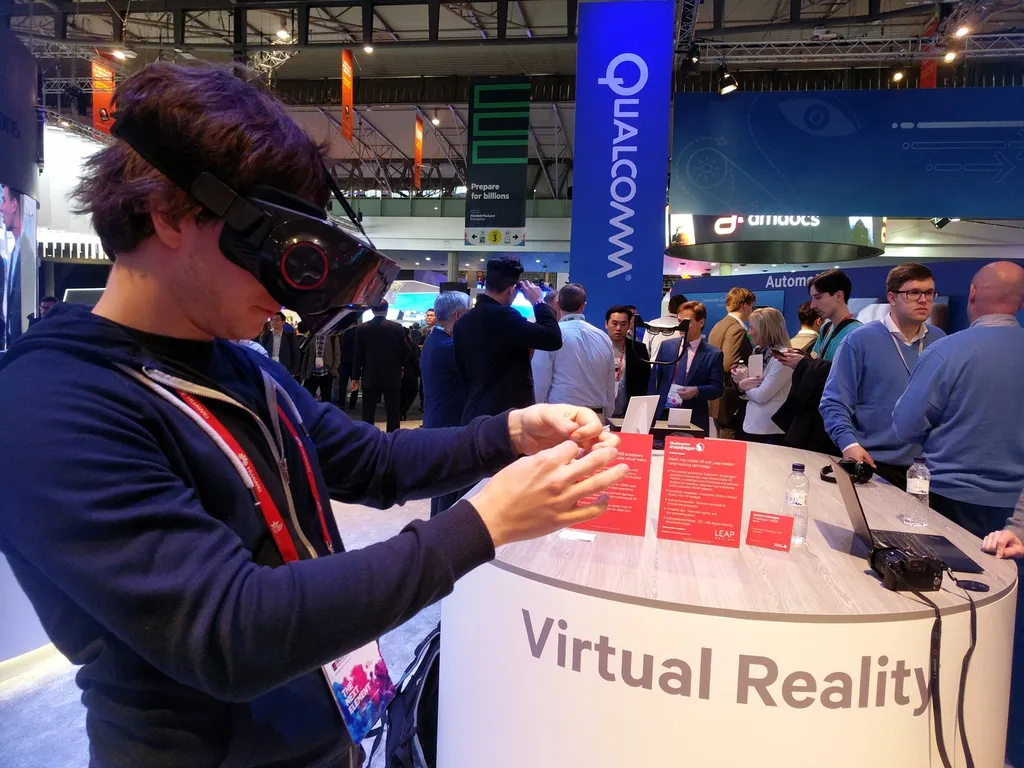A few weeks back I went hands-on with Leap Motion’s mobile VR hand-tracking solution, and now you can see it in action for yourself.
The video below shows a build of Leap’s Blocks demo designed for mobile VR headsets like the Qualcomm reference design it’s already been integrated into. Here users can create different shapes by pinching their hands together and then pulling them apart. They can then pick up the blocks by making a grabbing shape with their hands. It didn’t run quite as smoothly as this when I tried it at the 2017 Mobile World Congress, but I was able to do everything shown in the video.
Unlike its original sensor, released as an external add on for PCs and their compatible headsets, its latest tech is actually built inside of VR devices. That means companies that take on Qualcomm’s reference design and build their own mobile VR headsets, the first of which will be releasing later this year, can include hand-tracking within if they so choose, but are under no obligation to do so. I speculated that the optional nature of Leap’s support might well help the device in the long-run, as developers won’t need any additional peripherals to support the tech, just what’s already embedded inside the headset.
The first mobile VR headsets based on Qualcomm’s tech are expected to launch later this year. Whether or not they support hand-tracking remains to be seen.


























